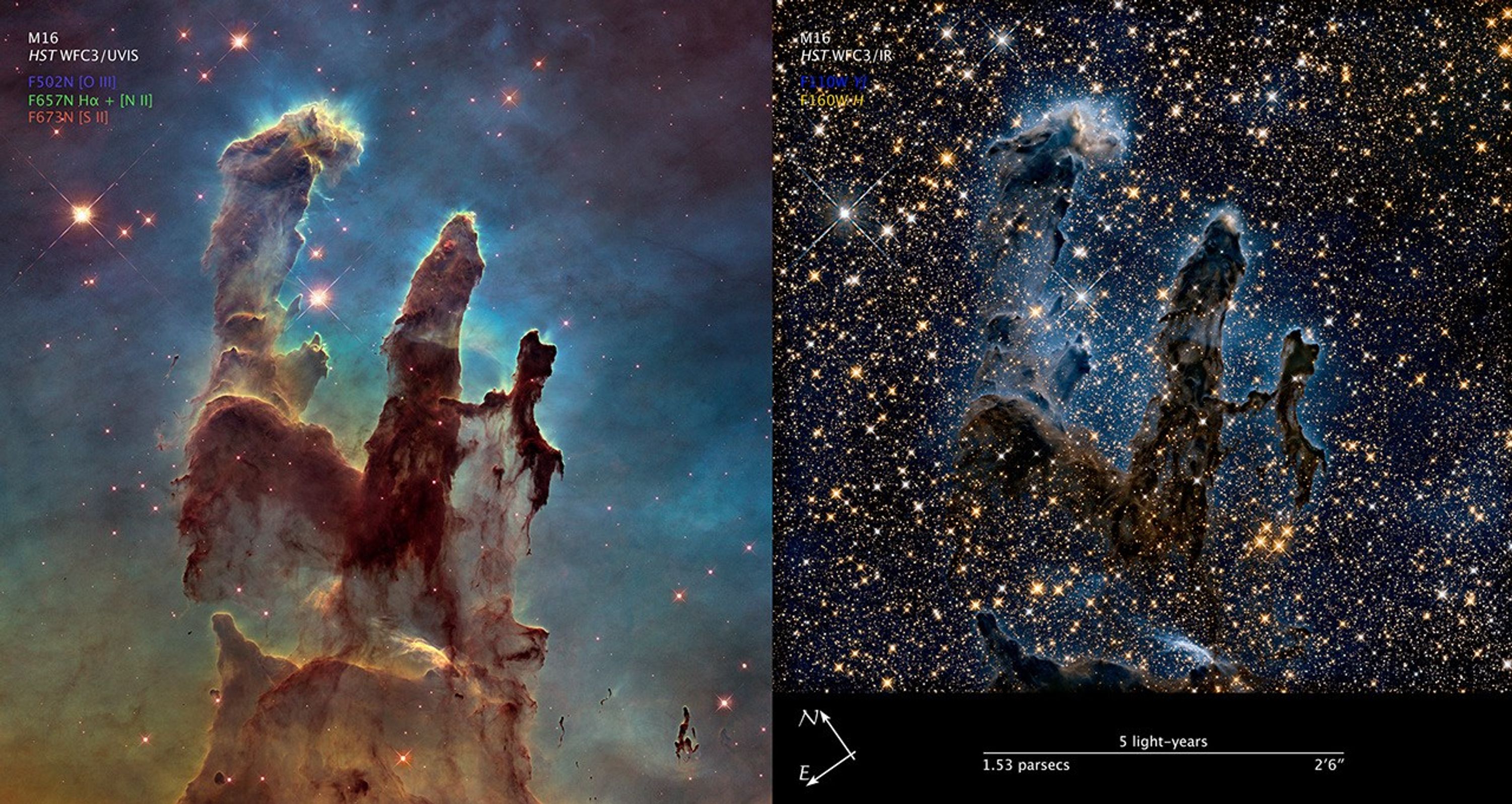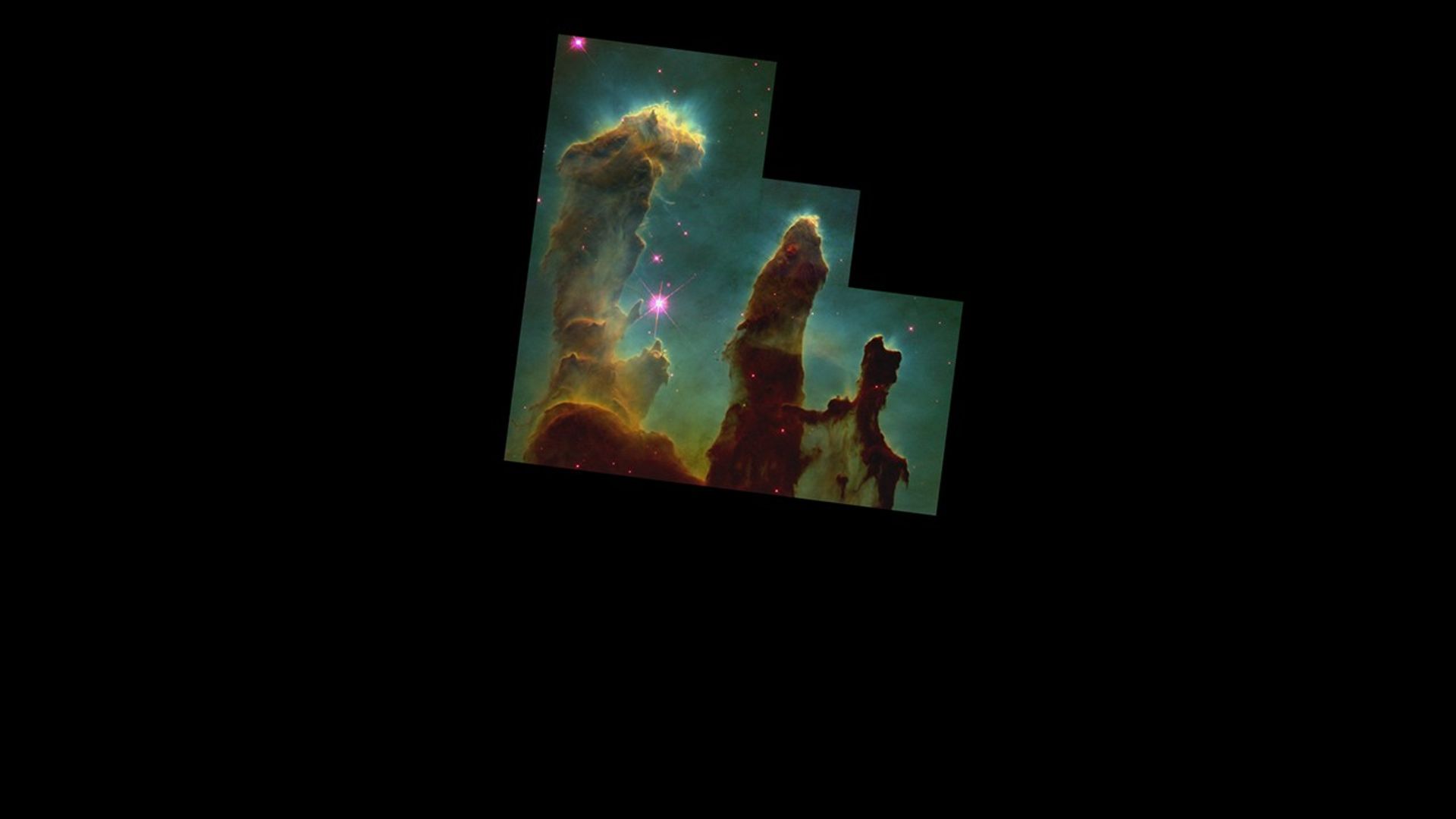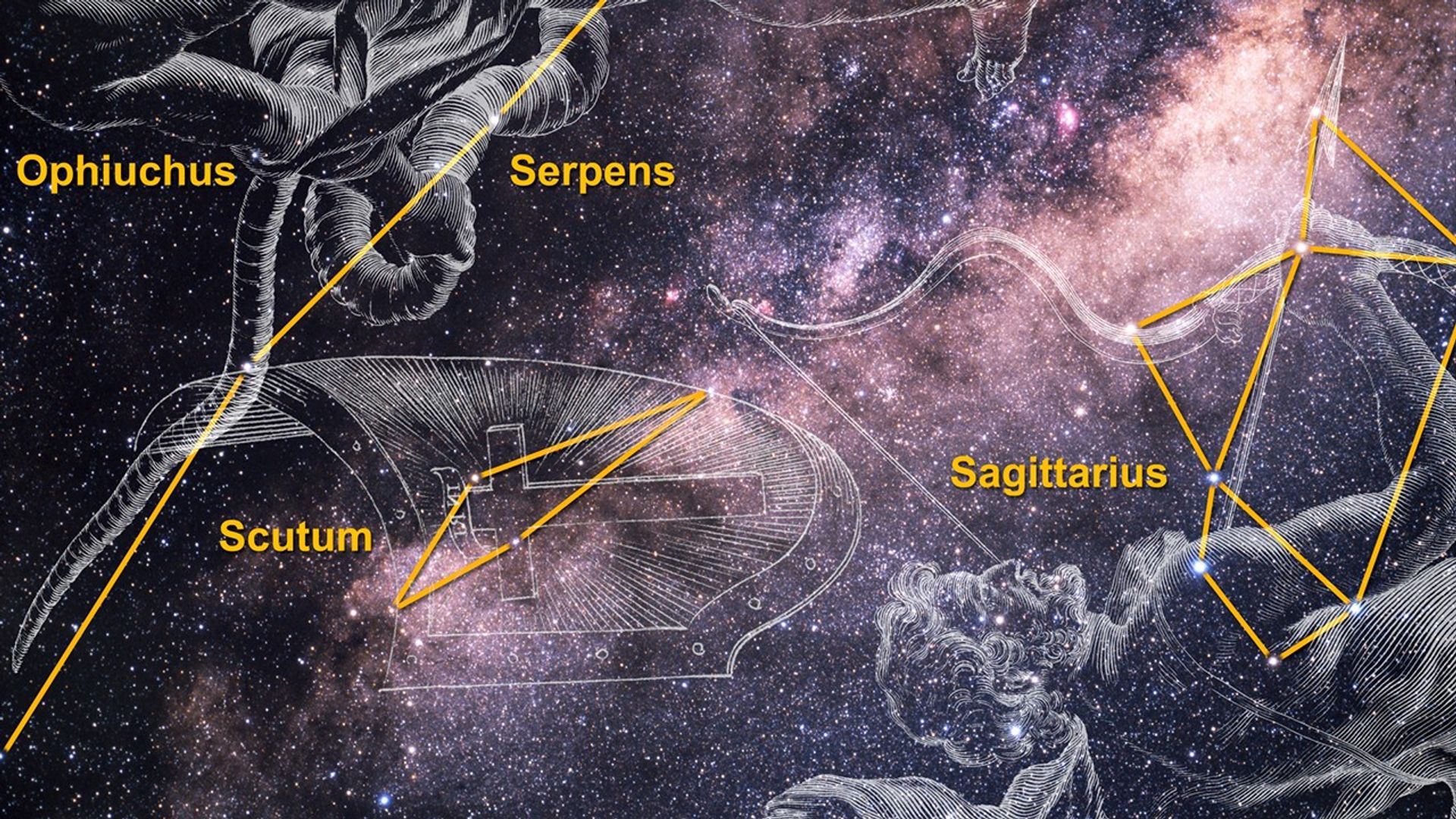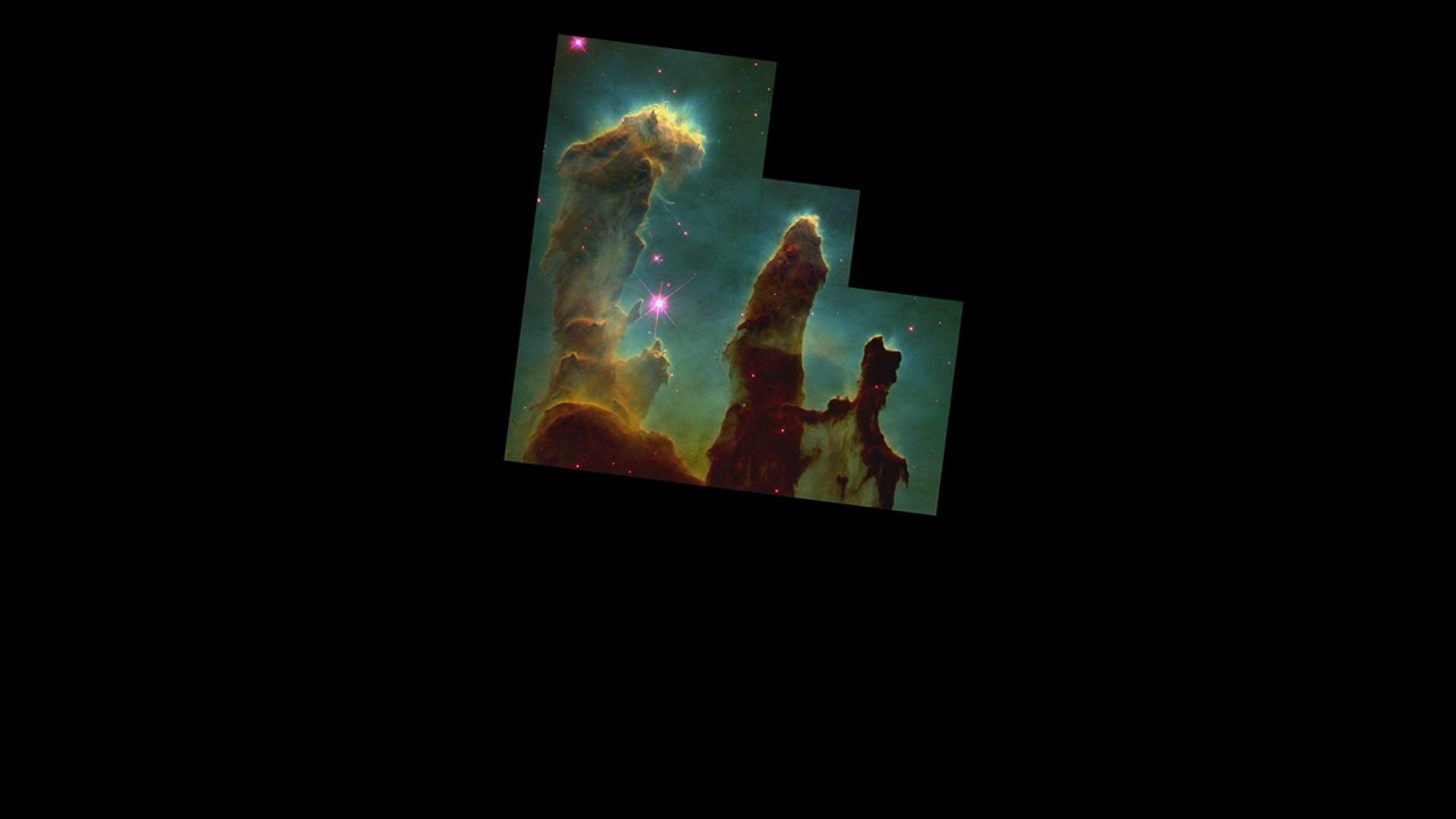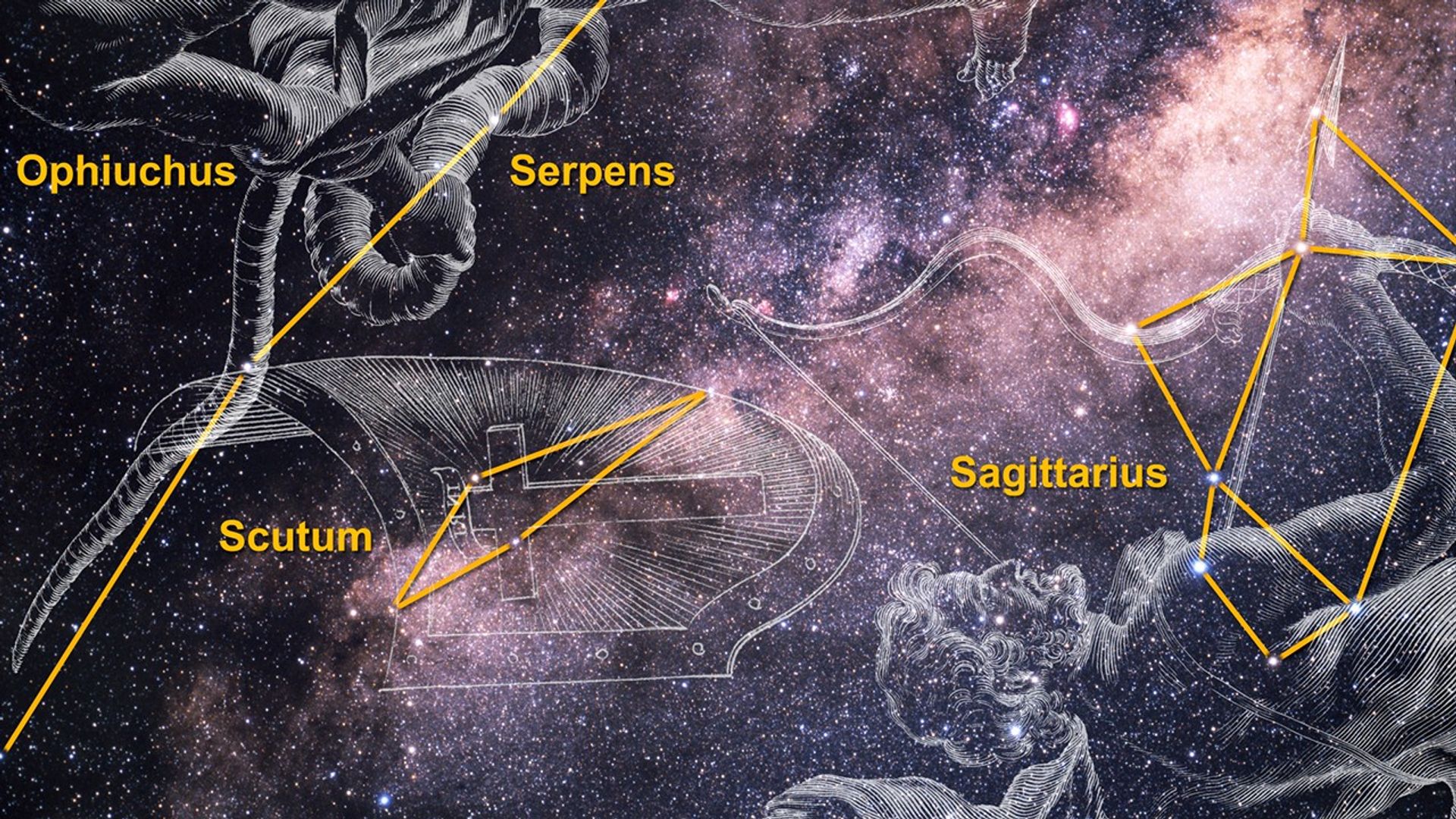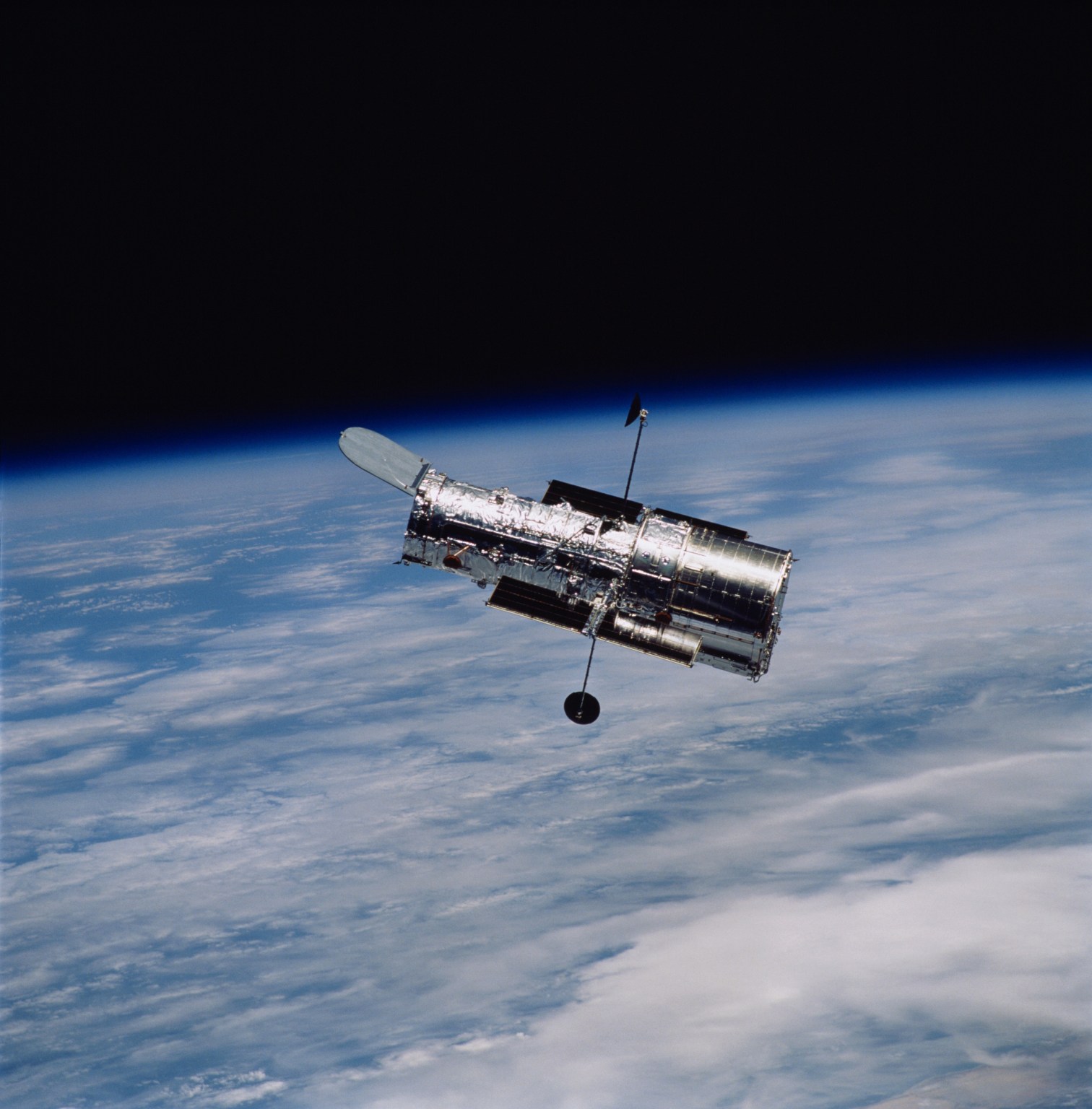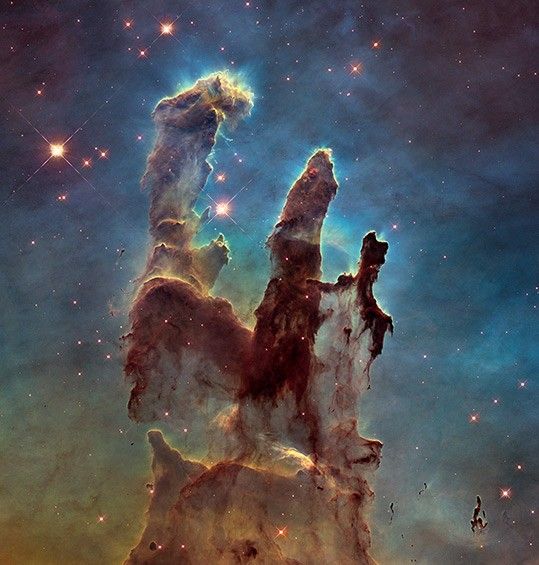1 min read
2014 Hubble WFC3/UVIS Image of M16

NASA's Hubble Space Telescope has revisited the famous Pillars of Creation, revealing a sharper and wider view of the structures in this visible-light image.
Astronomers combined several Hubble exposures to assemble the wider view. The towering pillars are about 5 light-years tall. The dark, finger-like feature at bottom right may be a smaller version of the giant pillars. The new image was taken with Hubble's versatile and sharp-eyed Wide Field Camera 3.
The pillars are bathed in the blistering ultraviolet light from a grouping of young, massive stars located off the top of the image. Streamers of gas can be seen bleeding off the pillars as the intense radiation heats and evaporates it into space. Denser regions of the pillars are shadowing material beneath them from the powerful radiation. Stars are being born deep inside the pillars, which are made of cold hydrogen gas laced with dust. The pillars are part of a small region of the Eagle Nebula, a vast star-forming region 6,500 light-years from Earth.
The colors in the image highlight emission from several chemical elements. Oxygen emission is blue, sulfur is orange, and hydrogen and nitrogen are green.
Extended Description and Image Alt Text
Extended Description
Three thick brown asymmetrical columns are in the center and stretch toward the top. The top left pillar is the largest and widest. The second one to its right is slightly smaller, and the third significantly smaller. They resemble plumes of smoke that range from light to dark brown in color. The dark brown pillars are outlined by a light yellow-green glow, with thin streaks of glowing material radiating out from their edges.
Below the pillars, at the bottom of the frame, is a base with many layers of semi-transparent brown gas and dust overlaying one another. One peak rises from the left side of the base. On the right, the base is more rounded. Continuing upward, the light brown dust becomes more diaphanous and there’s a slight gap in the dust, which allows the background to come into view clearly before the view of the background is blocked again by the pillars.
The background is blue near the top, and a mix of green and orange near the bottom, with the area near the columns having a lighter shade than the environment further away. In the lower right corner are tiny dark brown pillars, which look like a miniature version of the main pillars. Many small red dots and a few larger light orange points with diffraction spikes are scattered across this swath of space, including some small red circles seen near and in front of the pillars.
Image Alt Text
The Pillars of Creation. Three dark brown columns of gas and dust illuminated by starlight.
About the Object
- R.A. PositionR.A. PositionRight ascension – analogous to longitude – is one component of an object's position.18h 18m 48.17s
- Dec. PositionDec. PositionDeclination – analogous to latitude – is one component of an object's position.-13° 48' 26.03"
- ConstellationConstellationOne of 88 recognized regions of the celestial sphere in which the object appears.Serpens
- DistanceDistanceThe physical distance from Earth to the astronomical object. Distances within our solar system are usually measured in Astronomical Units (AU). Distances between stars are usually measured in light-years. Interstellar distances can also be measured in parsecs.6,500 light-years (2,000 parsecs)
About the Data
- Data DescriptionData DescriptionProposal: A description of the observations, their scientific justification, and the links to the data available in the science archive.
Science Team: The astronomers who planned the observations and analyzed the data. "PI" refers to the Principal Investigator.Data of M16 were obtained from the HST proposal 13926, P.I. Z. Levay, J. Mack, C. Christian, L. Frattare, M. Livio, S. Meyett, M. Mutchler, and J. Sokol (STScI/AURA), and K. Noll (NASA/GSFC). - InstrumentInstrumentThe science instrument used to produce the data.HST>WFC3/UVIS
- Exposure DatesExposure DatesThe date(s) that the telescope made its observations and the total exposure time.September 2014, Exposure Time: 30.5 hours
- FiltersFiltersThe camera filters that were used in the science observations.F502N ([O III]), F657N (H-alpha + [N II]), and F673N ([S II])
- Object NameObject NameA name or catalog number that astronomers use to identify an astronomical object.M16, Eagle Nebula, NGC 6611
- Object DescriptionObject DescriptionThe type of astronomical object.Emission Nebula
- Release DateJanuary 5, 2015
- Science ReleaseHubble Goes High Def to Revisit the Iconic ‘Pillars of Creation’
- CreditNASA, ESA, and the Hubble Heritage Team (STScI/AURA)

These images are composites of separate exposures acquired by the WFC3 instrument on the Hubble Space Telescope. Several filters were used to sample broad and narrow wavelength ranges. The color results from assigning different hues (colors) to each monochromatic (grayscale) image associated with an individual filter. In this case, the assigned colors are: Blue: F502N ([O III]) Green: F657N (Hα + [N II]) Red: F673N ([S II])

Related Images & Videos
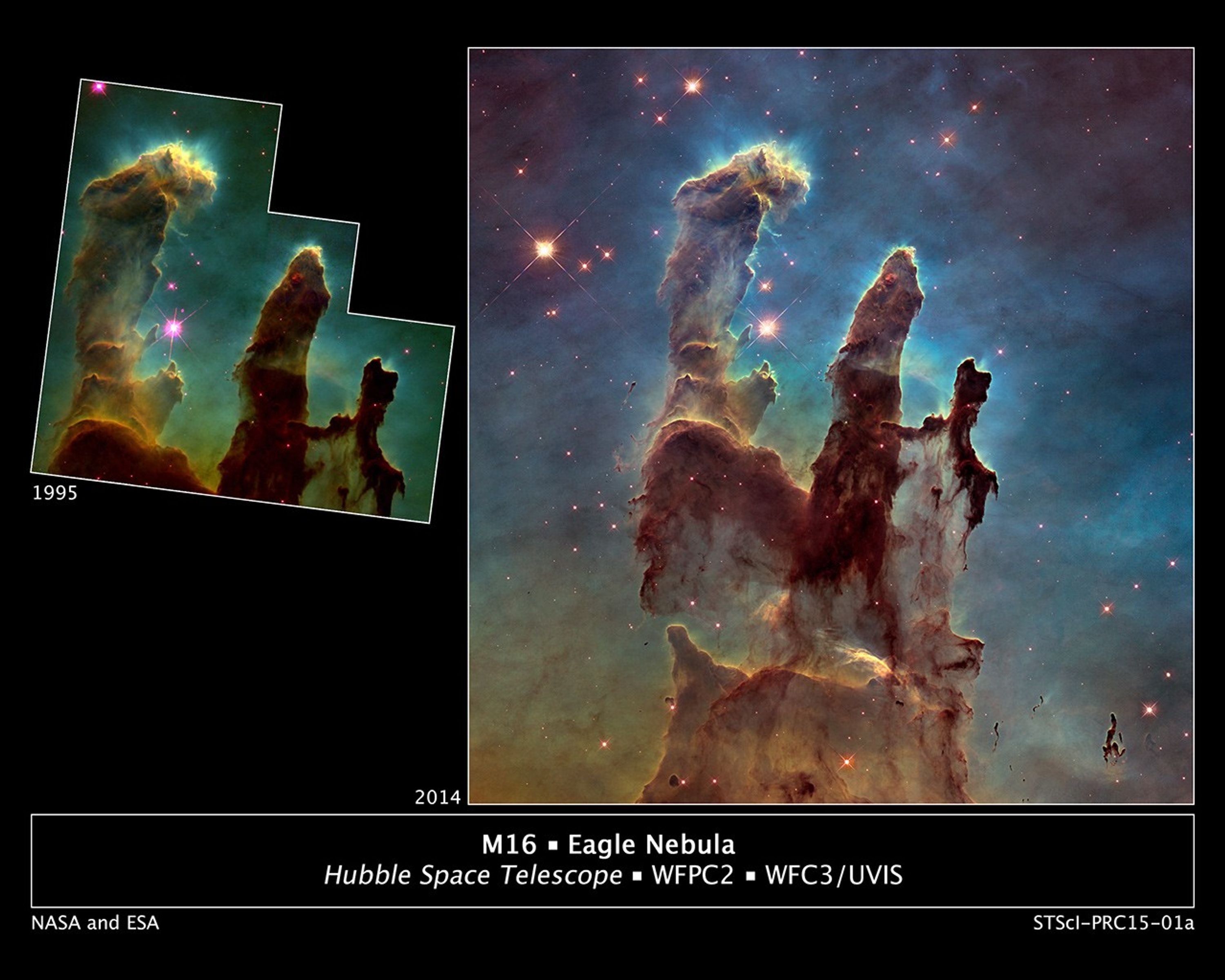
Hubble Revisits the Famous 'Pillars of Creation' to Celebrate 25th Anniversary
NASA's Hubble Space Telescope has taken a bigger and sharper photograph of the iconic Eagle Nebula's "Pillars of Creation," shown at right. The original 1995 Hubble image of the gaseous towers, taken with Hubble's Wide Field Planetary Camera 2, is shown at left. Astronomers...
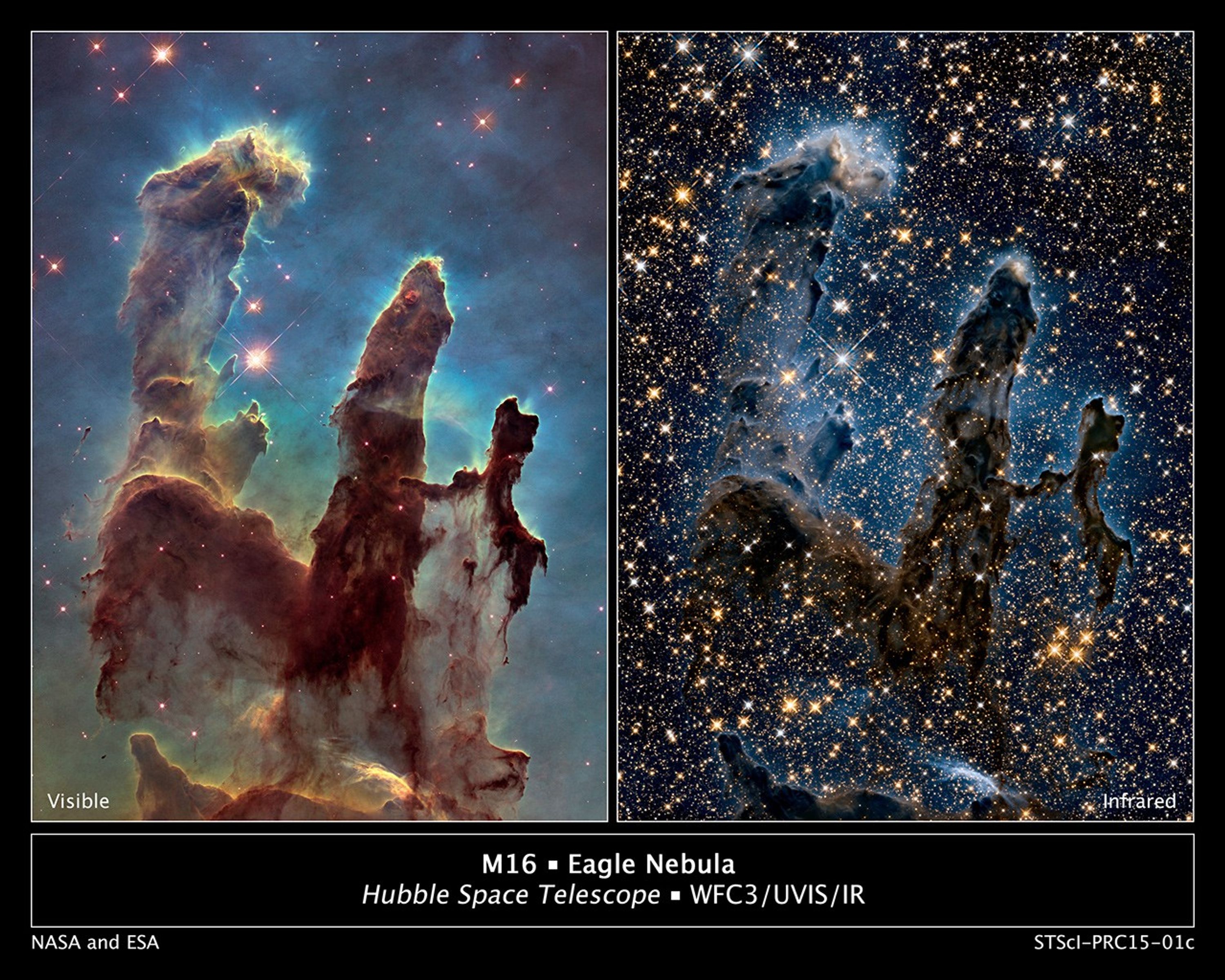
A View of the Pillars of Creation in Visible and in Near-Infrared Light
These images by NASA's Hubble Space Telescope reveal how different the iconic Pillars of Creation appear in visible and in near-infrared light. In the visible-light image at left, astronomers combined several exposures to show a wider view of the pillars and the surrounding...

2014 Hubble WFC3/UVIS Image of M16 (Cropped)
NASA's Hubble Space Telescope has revisited the famous Pillars of Creation, revealing a sharper and wider view of the structures in this visible-light image. Astronomers combined several Hubble exposures to assemble the wider view. The towering pillars about are 5 light-years...

2014 Hubble WFC3/IR Image of M16 (Cropped)
This NASA Hubble Space Telescope image, taken in near-infrared light, transforms the pillars into eerie, wispy silhouettes, which are seen against a background of myriad stars. The near-infrared light can penetrate much of the gas and dust, revealing stars behind the nebula as...

A Near-Infrared View of the Pillars of Creation
This NASA Hubble Space Telescope image, taken in near-infrared light, transforms the pillars into eerie, wispy silhouettes, which are seen against a background of myriad stars. The near-infrared light can penetrate much of the gas and dust, revealing stars behind the nebula as...
Share
Details
Claire Andreoli
NASA’s Goddard Space Flight Center
Greenbelt, Maryland
claire.andreoli@nasa.gov




























